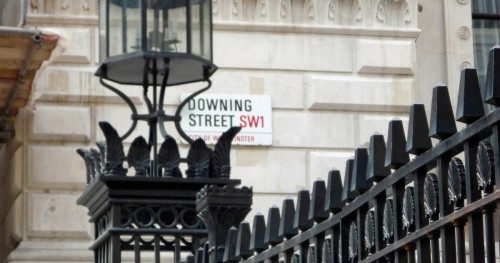
A UK freelancer's overview of maternity rights
Until it becomes something that they or their partner are going to be directly affected by, maternity leave, rights and payments are issues that freelance sole traders have varying levels of understanding of, writes David Tattersall of online accountancy network Handpicked Accountants.
Much of that understanding usually derives from the widest, most typical type of maternity payment – Statutory Maternity Pay, which is for permanent employees as opposed to the self-employed.
The most common maternity package
SMP, as it is known, is paid for by the employee’s employer. In order to claim SMP, you must fulfil the following criteria (which is part of what makes freelance sole traders ineligible):
- Carry out 26 weeks of continuous work with your employer, ending on the 15th week before your ‘due date’ ,
- Inform your employer of your pregnancy 15 weeks before the due date. You must also share your expected due date and your intended date to begin maternity leave. This can be no earlier than 11 weeks before your due date
- Proof of pregnancy is required in order to approve statutory maternity pay. This can include a letter from the doctor/midwife or a MAT B1 certificate which is typically issued no earlier than 20 weeks prior to the due date ,
Furthermore, the employer of the employee is required to confirm your start and end-date within 28 days of the notice of pregnancy. If you are not eligible, your employer must give you an SMP1 form within 7 days and detail the reasons behind the rejection. Freelancers, remember this form’s name – we will come back to it later.
How Statutory Maternity Pay gets paid
Nonetheless, SMP is paid in the following manner:
- 90% of your average weekly salary is taken in the first six weeks
- During the following 33 weeks, you will be paid £148.68 or 90% of your salary ,
For example, if as an employee you earn £200 per week, you will receive £180 of statutory maternity pay for the first 66 weeks and then £148.63 for the remaining 33 weeks. However, if you earn £120 per week, you will receive £108 statutory maternity pay for the full 39 weeks. Tax and national insurance will be deducted.
Alternatively, your employer may have a maternity scheme in place which should amount to no less than statutory maternity pay. It is worth noting that you are only able to claim one benefit at any given time. Maternity allowance – reserved for the self-employed as we explore below, and statutory maternity pay are reviewed every April; the last increase of £3.50 took the payment from £145.18 to £148.68.
The maternity package if you’re freelance or self-employed…
Self-employed or not, as a working professional, transitioning into parenthood typically means planning your work schedule in accordance with the pregnancy, due date and personal health. As part of the process if you are self-employed, freelance, or sole trading, you will need to educate yourself about the Maternity Allowance, and your rights and entitlements. The previous section on Maternity Pay should be understood too, especially if you’re a limited company freelancer (or Personal Service Company freelancer /director).
As is hopefully becoming clear to you by now, your rights and maternity payments will be determined by your employment status, so if you are a full-time employee or a PSC, the type of maternity package you can receive will vary.
As a self-employed woman or female freelancer, you are able to claim Maternity Allowance which will provide financial support to you while preparing for and following the birth of your child. This is paid for by Jobcentre Plus, part of the Department for Work & Pensions (DWP).
Be aware, if you are a permanent, full-time employee with an employer and you are not able to claim statutory maternity pay, you may qualify for maternity allowance. As explained previously, statutory maternity pay is the standard form of payment most women typically get if they are a permanent employee.
Maternity Allowance -- the finer details
But if you’re not a full-time employee, and are actually a contractor or freelancer, Maternity Allowance is for you. Be aware though, you are only able to claim maternity allowance once you are 26 weeks pregnant. In order to receive maternity allowance for 39 weeks, the following three conditions must be meet (as set out by HMRC):
The DWP will be able to check if you have paid enough National Insurance to qualify for the full rate which (at the time of writing) stands at £148.68 per week or 90 per cent of your average weekly wage - whichever is less.
If enough NI has not been paid, you may qualify for the reduced rate of £27 per week. Alternatively, you are able to make advanced National Insurance Contributions to HMRC to qualify for the full rate of maternity allowance.
Payments of Maternity Allowance will start 11 weeks before the baby is due, and these will be paid in either two to four-week intervals. If you decide to resume working during this period, you are advised to report this change.
Please note, if your baby is born early or you experience a stillbirth after 24 completed weeks of pregnancy, you may still be eligible for maternity allowance.
How do freelancers apply for Maternity Allowance?
You are able to claim maternity allowance by submitting an MA1 form; this can either be emailed or sent through the post. You are required to submit the following evidence along with your MA1 form:
- Proof of income
- Proof of baby’s due date
- SMP1 form – (as mentioned previously, freelancers) this is effectively a refusal for statutory maternity pay from the employer – where applicable ,
Limited Company Director – what can I claim?
As a limited company director, you are able to claim statutory maternity pay if you are able to fulfil the following criteria:
- You are considered an employee of your own limited company
- You have been working for the limited company as an employee for a minimum of 26 weeks in the 15 weeks before your due date ,
- Other workers are able to fulfil your duties while you’re on maternity leave
- The company can earn enough money while you’re on maternity leave and can afford to pay your statutory maternity pay ,
Keep in Touch days
If you successfully qualify for statutory maternity pay as a limited company director or permanent employee, you will be eligible for 10 keep in touch days (KIT). Keep in touch days are paid working days which allow you to return to work to ensure the smooth-running of your business. It is worth noting that whether it is a few hours or a full-day that you work, this will qualify as one full keep in touch day. Such KIT days are optional and should be mutually agreed between the employer and employee.
Final thought
The period of maternity leave is a sensitive and precious time for both parents as a new family member is born and a milestone is celebrated. Accessing sufficient financial support is vital in order to maximise the time spent with your child and to maintain your living standards during this period.
This ‘UK Freelancer’s Overview of Maternity Rights’ exclusively for FreelanceUK is written by David Tattersall of online accountancy network Handpicked Accountants.



Comment
Log in or create your account to react to the article.